Applied Research Old
Description
Basic research ends up being tightly connected with practical applications. Along my carreer, I managed to find concrete applications of the thoretical tools that I’ve learned working as a mathematical physicist. Most of them are related to quantum computing and quantum information theory, sure.
But the -perhaps- unexpected outcome, is the application of tools taken from information theory to software development. These techniques range from the development of machine learning tools for the analysis of complex data, to the information-thoretic study of temporal series associated to the COVID pandemics. Some of the ongoing projects are listed below.
If you are interested in any of the tools developed, or if you think that your problem can be addressed using variants of the tools described below, do not hesitate in contacting me by filling the form in the contact section.
Estimation of quantum states and quantum devices certification
The estimation of unknown quantum states is crucial for quantum information processing taks.
We have developed a technique which allows to exploit known symmetries of otherwise unknown quantum states to reduce costs in quantum states estimation tasks. This is crucial for quantum devices certification. Alike previous methods, it works for arbitrary symmetries.
During 2023, I was the Director of a INNOVA CONICET – AWS project aimed to implement and detect symmetric quantum states in quantum computers.
Machine learning-based image processing for urban analysis and development

The analysis of images of urban regions is crucial for the development of public policies oriented to improve life quality in densely populated cities. The detection and analysis of organic growth requires of the development of advanced techniques aimed to recognize different types of structures, such as buildings, roads, and vegetation.
During 2023, I was the Leader of the CONICET Researcher Team of a Fundación Sadosky project that used drones and the latest machine learning techniques for image recognition.
The developments of the team allow for a fast characterization of structures and semantic content associated to images taken with drones, allowing for a reduction of the cost of the characterization task. This can be applied to any kind of populated areas. In particular, it is relevant for the characterization of informal settlements, where no official information is available.
Analysis of COVID-19 temporal series of data
The COVID-19 pandemic was a shock for all mankind, and it forced many researh and public agencies to join efforts to handle the situation.
Among all the different areas to deal with, the statistical analysis of COVID-19 data played a prominent role in the development of public policies.
With a La Plata National University research team, we joined efforts with the Ministry of Justice and Human Rights of the Province of Buenos Aires through a research collaboration agreement.
We have also studied some information theoretic aspects of the COVID-19 pandemics temporal series. Some of our foundings can be accessed here and here. We have used different information theoretic tools, such as the permutational entropy, wavelet entropy, and wavelet coherence.
